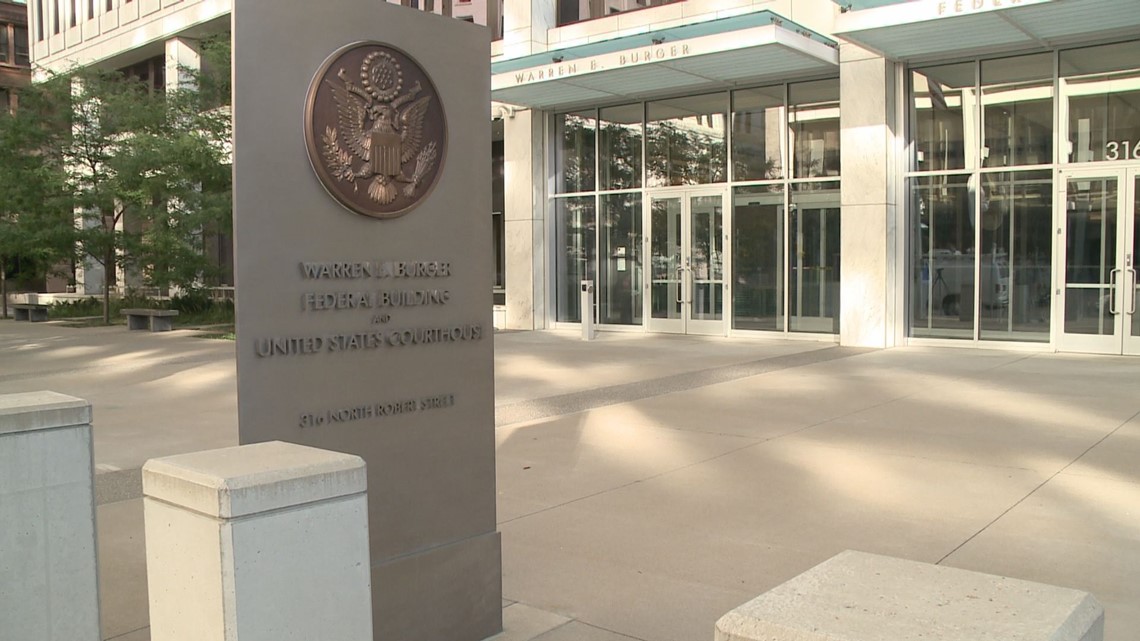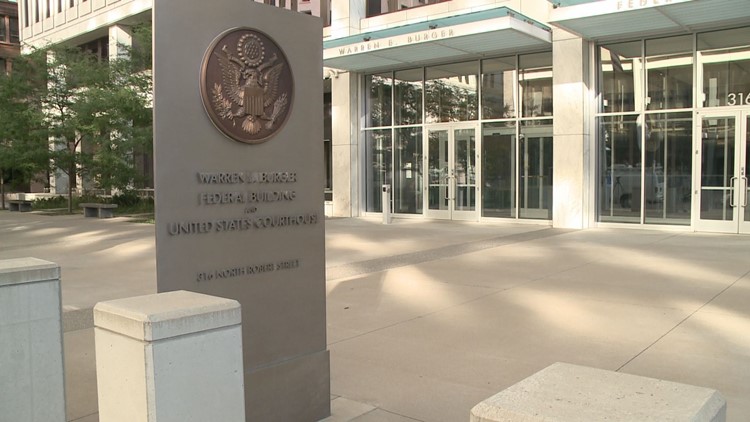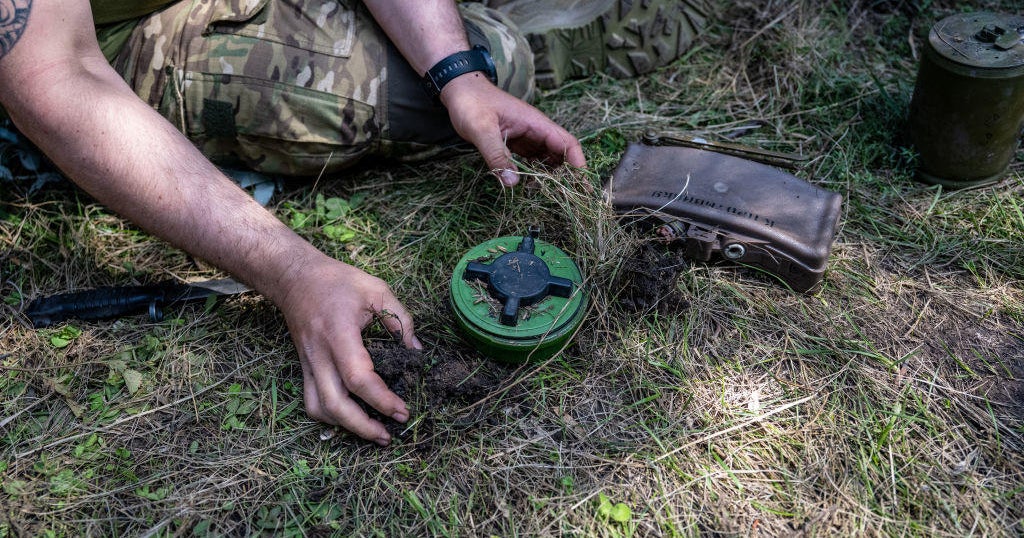Kare11
Community remembers Minnesota teen killed in car crash


Luke Knudson died Sunday night after crashing into a traffic light off a Minnetonka highway.
ORONO, Minn — In a tight-knit town where pain reverberates, candles now light the way to the Knudson home—the same house 17-year-old Luke Knudson came home to every day.
The Orono High School senior died Sunday night after crashing into a traffic light off a Minnetonka highway. His vehicle burst into flames. Flowers and a letter of support for his family now sit at the same intersection.
Loved ones remember Luke as someone full of life and love.
“I think anybody that met Luke, the first thing [they’d] say is he was really full of energy,” his mother Renae Rhude-Knudson said on Tuesday. “He cared about other people.”
In some ways, Luke was an ordinary kid. “He loved dogs, he loved going to the cabin.” In other ways, Rhude-Knudson said her son was extraordinary. “He was just really, really kindhearted, really funny, really witty and really was happy for other people when good things happened to them.”
Funny, smart and compassionate, Rhude-Knudson said Luke was devoted to his family, friends and basketball. He was looking forward to his final high school basketball season alongside his best friends.
“We love Lucas with our whole heart, and he loved us back and he’s going to be dearly missed,” Orono High School head basketball coach Barry Wohler said.
Wohler emphasized that this season will be dedicated to Luke. The first team practice is planned for Tuesday after being canceled Monday afternoon.
“Yesterday was a really tough day,” Wohler added. “I was just meeting with some of the players now, and it’s been a tough day again today. A lot of tears.”
Wohler said he and the players are trying to heal together and be strong for one another. Rhude-Knudson said it’s what her son would want them and others to do.
“Just like I told the boys last night: everybody’s going to be sad, and the sadness is going to come in waves. Just make sure that you keep going,” she said. “He’d want you to keep going.”
Rhude-Knudson said a family trip to Kenya and subsequent leadership class project inspired Luke to connect with the nonprofit the Samburu Project, which builds hand-pump wells for people in Samburu who do not have access to clean water. She said Luke was working on the project the night he passed away. His family plans to continue his work with the organization and make a difference in Luke’s honor.
Kare11
Xcel’s massive solar project already online


Massive solar farm near Clearwater will eventually cover 5,000 acres and produce enough electricity to power 150,000 homes.
MINNEAPOLIS — Xcel Energy celebrated a clean energy milestone Tuesday, marking the completion of the first phase of the utility’s massive Sherco Solar Project near Clearwater.
Company executives, contractors, union leaders, utility regulators and government officials gathered at the edge of the immense array of solar panels for a ceremony calling attention to the fact that power has started to flow to the regional power grid.
“As the largest clean energy project in the upper Midwest, this project demonstrates we’re not just talking about clean energy, we’re actually building it,” Xcel CEO Bob Frenzel told those who gathered at the site Tuesday. “Our clean energy vision is about sustainability, but it’s also about energy security. It’s about reliability. It’s about economic prosperity for all, for our customers, for our communities.”
Xcel Energy has invested heavily in wind energy in the past, but the Sherco project is the utility’s largest solar venture. It’s strategically located to connect to the grid at the nearby Sherco Energy Center, a coal-fired plant that is being phased out after serving as the main source of electricity in the area for decades.
By the time the Sherco Solar Project is finished in 2026, the complex will feature 1.5 million solar panels spread across 5,000 acres. It will be capable of generating 710 megawatts, which is enough juice to power 150,000 homes.
The utility is also launching a major battery storage project at the same site, and will be testing new technologies for capturing and holding the energy.
Frenzel noted that while Xcel has closed 24 coal-burning units across its system in the past 15 years, it hasn’t resulted in any staff losses in those communities.
Ryan Long, Xcel’s president for the Minnesota and Dakotas region, thanked the utility’s partners for the roles they’ve played in making a transition to clean energy.
“We can do all of this and keep bills low for customers,” Long told the crowd. “The investments we’re making bring back hundreds of millions of dollars in federal grants to Minnesotans, and back to our customers through lower bills.”
Long said Xcel will continue to take an “all of the above” approach to renewable energy sources, which includes extending the lives of the state’s existing nuclear power plants.
“We’re going to invest in hundreds of megawatts of new battery storage, but we’re also going to extend the lives of our nuclear facilities, which provide around-the-clock carbon-free energy on our system and really will become the new backbone of our generation system as we move through this energy transition.”
Xcel invited Governor Walz to the solar launch, to thank him for setting high goals for carbon-free sources of energy and supporting legislation that will make it easier to build transmission lines connecting renewable energy projects to where the demand exists.
“We’re proving for the rest of the country this is not an either/or choice. We are producing energy across the spectrum, from nuclear, to natural gas, to the clean energies you see here,” Walz remarked. “When you look at this happening, this is what the future can look like. And the future is bright.”
Instead of the traditional ribbon-cutting photo op, they held a symbolic “plug-in” ceremony, to highlight the fact phase one of Sherco Solar is already generating electricity.
Katie Sieben, who chairs the Minnesota Public Utilities Commission, said the project represents a collaboration of many stakeholders. She also noted that Xcel and its contractor Blattner Energy of Avon have complied with mandates to pay prevailing wages, logging 730,000 hours of work by union members on the solar project.
She thanked Xcel for starting the project in the midst of the COVID-19 pandemic.
“We needed Minnesotans to get back to work. We knew we needed help building our clean energy future. And, thanks to Xcel’s vision, leadership, and perseverance, they brought a really wonderful project to Minnesota.”
Chris Hodrick of Blattner Energy thanked the unions by name, which include Operators Engineers Local 49, LIUNA Local 563, Ironworkers Local 512, IBEW Local 292, and IBEW Local 160.
He also gave a shoutout to the communities around the Sherco Plant for welcoming his crews and subcontractors.
“With the towns of Becker and Clearwater the support here has been tremendous. It’s important for us because we’ve become part of the community.”
Kare11
Eden Prairie man sentenced for COVID relief fraud


The 75-year-old is accused of spending the Paycheck Protection Program money on himself.
ST PAUL, Minn — An Eden Prairie man was sentenced to seven years behind bars for Covid relief fraud, with officials saying he applied for more than $2.1 million in funds which he spent on himself.
U.S. Attorney Andrew M. Luger announced in a press release Harold Bennie Kaeding, 75, of Eden Prairie was sentenced to more than seven years in federal prison. He was convicted of wire fraud, aggravated identity theft, and money laundering.
In the first three months of the Covid-19 pandemic, Luger said Kaeding used the name of close family members to submit loan applications for different corporate entities, that were either defunct or not in existence when the pandemic began.
Kaeding was accused of fabricating tax documents, manufacturing bank statements, and submitting records to ensure the applications appeared legitimate. He initially received $1,642,670, Luger said, but banks realized the irregularities and were able to get some of the money back.
“Among other things, Kaeding used the money to get his personal residence out of impending foreclosure, purchase an SUV, and stockpile more than $80,000 in cash,” Luger said.
Kaeding was arrested in Columbia, where officials say he fled to when he learned he was under investigation. He was found guilty at a jury trial in August.
Kare11
Report: Fewer nursing home beds in rural MN


The Center for Rural Policy and Development published a new report that found rural Minnesota counties have 41% fewer nursing facility beds compared to 2005.
MINNEAPOLIS — The healthcare crisis across rural America just keeps growing.
A new report from the Center for Rural Policy and Development out of Minnesota shows that demand for long-term care for the elderly will skyrocket over the next 20 years.
Experts say the biggest hurdle will be to try and staff for that increase.
The University of Minnesota’s Rural Physician Associate Program is matching about 35 of its medical students a year to more rural areas where they learn a broader skillset and become well-known in the community.
“If we can get students to experience that in our program, they’re three times more likely to practice in a rural spot,” said U of M Professor Dr. Kirby Clark. “We don’t focus just on physicians because by themselves, without a team, is pretty worthless, so we promote all the other health professions that a community needs.”
The need extends beyond doctors and includes recruiting pharmacy techs and nurses, particularly at nursing homes, and the problems have forced many to shut their doors.
In Minnesota, eight nursing homes closed in 2023. In the three years before that, there were another 15, including one Jenny Gleason oversees.
“It was excruciating,” said Gleason, who’s the CEO of Living Services Foundation which has several facilities in southwest Minnesota. “People were just heartbroken because it becomes their community.”
Gleason converted that one closed facility to assisted living in 2021, citing staffing shortages.
“When we are constantly searching and calling everyone to see if you can work overtime, can you do this, like everyone is stressed,” said Gleason. “And it’s not that people don’t want to do a good job or be there, but they need balance too.”
The new report says demand for nursing beds won’t peak for at least another 20 to 30 years when its data shows more than 37,000 people will need one.
It also shows patients are sicker, reimbursement rates are low and some wages are higher.
Some of those wages will go up even more as the state’s newly formed workforce standards board voted to start raising minimum pay and benefits in 2026.
“Figuring out how to get the cash upfront to fund that is really, really challenging, especially after going through COVID-19 when organizations like mine put every extra penny we had into just making it through,” said Gleason.
The most severe declines are happening in Red Lake County, which lost all of its beds. Cass Lake County only has 33 beds left, followed by Grant and Swift Counties.
The report says Chippewa County is the only one to have more beds because the Department of Veterans Affairs built a new facility just this year.
In the meantime, other locations have to keep getting creative with recruitment and some say they’ll push for fewer barriers, including the new, federal minimum staffing requirements.



